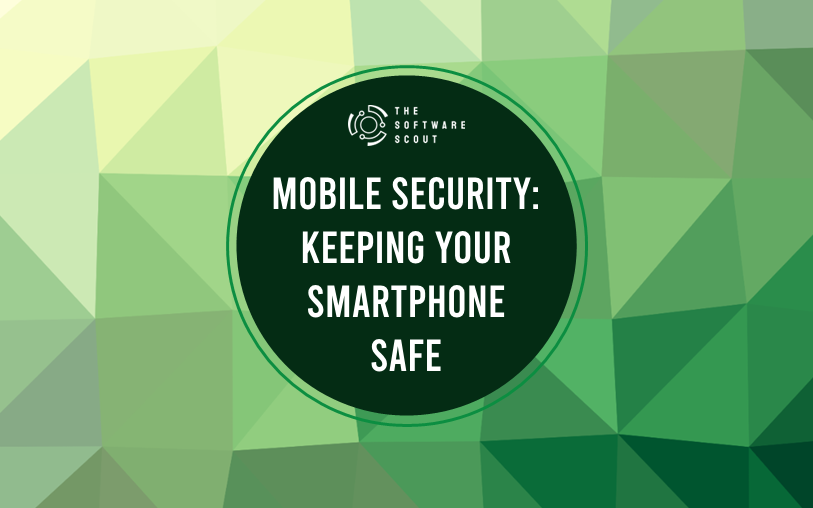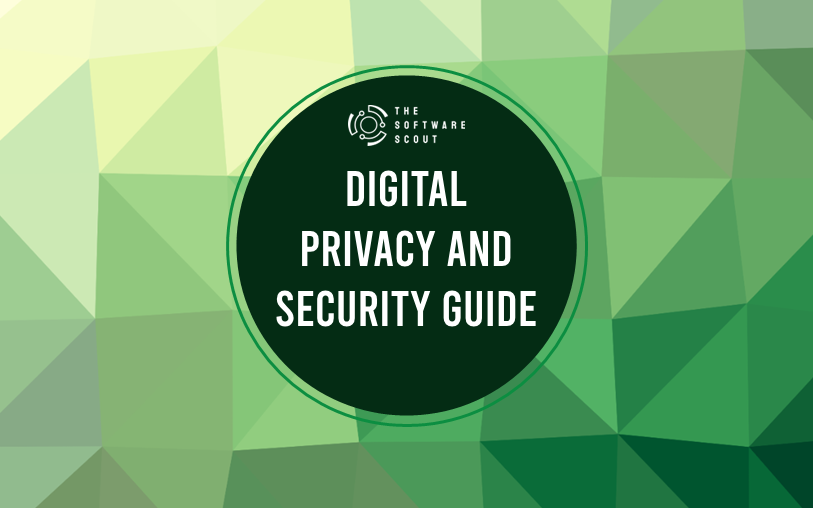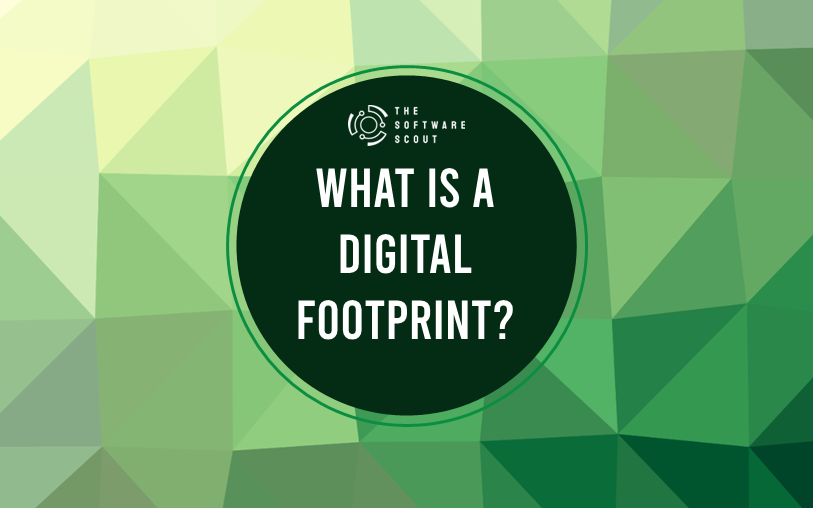Smartphones hold everything from photos of friends to banking information, and they power social connections alongside daily productivity. With all that data in one place, it’s no surprise that keeping your device secure is crucial.
Risks come in different shapes, from malware threats to unprotected Wi-Fi connections. Understanding these risks and having strategies to safeguard your phone can make a real difference in your digital life.
Below, you’ll find essential tips on protecting personal data, avoiding common threats, and staying up-to-date on the latest security measures. This guide covers best practices for authentication, network use, app management, and more.
By the end, you’ll be equipped with the knowledge needed to confidently secure your smartphone against threats lurking in the mobile landscape.

Why Mobile Security Matters
Smartphones serve as hubs for private communications, financial transactions, and personal habits. Any breach of security can compromise bank accounts, expose private chats, or even allow unauthorized access to social profiles. The consequences may go beyond simple inconvenience; losing personal or professional data can create legal and financial problems.
Years ago, phones were limited to calling, texting, and basic media. Now, they store contactless payment information, scan important documents, and handle sensitive emails. Hackers have realized there’s a lot to gain from breaching these devices, so it’s important not to underestimate how valuable your data might be to malicious actors.
Major app stores do their part by removing dangerous applications and patching loopholes, but criminals still find new ways to target unsuspecting users. Phishing schemes, social engineering, and exploit kits can slip past even the most vigilant user if the right security steps aren’t in place. These attempts often come as suspicious links in emails or text messages, so it helps to be on guard at all times.
Business professionals and freelancers especially need to keep their data private. Shared work documents, client contacts, and meeting notes often reside on personal smartphones. The cost of a data leak can rise quickly when corporate details or intellectual property leaks into the wrong hands.

Common Security Threats for Smartphones
The mobile threat landscape changes constantly, shaped by new technology and evolving hacker tactics. Even with built-in protections, your smartphone may be at risk if you’re not adopting safe habits. Below are a few of the most common dangers that phone users face:
- Malware and Viruses
Malicious software sneaks onto devices through unsecured apps or dubious links. Once installed, malware can steal credentials, generate annoying pop-up ads, or even lock you out of your own device. Ransomware is one example that encrypts user data and demands payment. - Phishing Attacks
Many people associate phishing with spam emails, but text messages, social media ads, and direct messages on communication apps can also lead users to unsafe links. Clicking such links can trigger malware downloads or direct you to a fake login page designed to harvest personal data. - Spyware
Certain apps may track your every move, record keystrokes, or monitor phone calls. Spyware often hides behind legitimate-looking applications and can be tricky to remove if you’re not regularly scanning your phone or installing apps from trusted sources. - Unsecured Wi-Fi Networks
Public hotspots in cafés, hotels, and airports are convenient but rarely secure. Attackers may set up “evil twin” Wi-Fi networks that mimic legitimate hotspots, tricking users into joining. Once connected, sensitive data like passwords or credit card details can be intercepted. - Bluetooth Vulnerabilities
Keeping Bluetooth on while in public can allow attackers to gain entry to your phone, especially if security settings are weak. This makes it simpler for them to exploit your device or send malicious files. - Outdated Operating Systems
Using older versions of iOS or Android leaves you open to known exploits. Software updates patch discovered vulnerabilities, so ignoring them gives attackers the perfect inroad for infiltration.
Identifying these threats is the first step in forming a solid defense. A smartphone security plan that includes strong authentication, frequent updates, and cautious downloading habits can ward off many of these problems before they arise.
Setting Up Strong Authentication
Strong authentication is more than just an old-fashioned password. Implementing extra layers of security makes it much harder for someone else to get into your device or accounts. The good news is that most modern phones offer several options.
Passcodes, Patterns, and Biometrics
- Long Passcodes: A 4-digit PIN can be guessed more easily compared to a 6-digit PIN or an alphanumeric password. Longer combinations increase the time it would take an attacker to brute force an entry.
- Pattern Locks: Some users find patterns simpler to remember than PINs. However, if you tend to use obvious swiping patterns, it might be less secure than a randomized approach.
- Fingerprint and Facial Recognition: Many smartphones offer biometric features. These methods are generally secure, but it’s best to pair them with a strong backup password in case your fingerprint scanner malfunctions or your face ID is compromised.
Multifactor Authentication (MFA)
Apps for email, social media, and banking often support MFA, which requires an extra verification step beyond your password. This might involve a code sent via text message, a code-generating app (such as Google Authenticator), or a hardware security key.
- Why MFA Matters: Even if someone guesses or steals your password, they’ll still need a separate, time-sensitive code to finalize the login process.
- Where to Enable It: Look for the security settings in your email, social media, or banking apps. Enabling MFA usually takes only a few minutes, and it often protects multiple devices linked to the same account.
Tips for Effective Authentication
- Avoid birthdays, common words, or repetitive patterns in your passcodes.
- Use a password manager to keep track of more complex credentials.
- Turn on lock screen notifications sparingly, as sensitive information might appear when you receive new messages.
Safe App Management
Apps are both the lifeblood and the greatest vulnerability of most smartphones. With millions of apps available, it’s essential to separate legitimate options from dangerous software. Safe habits in managing apps go a long way in minimizing risk.
Download from Trusted Sources
Official app stores like Google Play and the Apple App Store have stricter vetting processes compared to third-party marketplaces. While malicious apps sometimes slip through, it’s far less common than on unverified sites or stores.
- App Permissions: Skim through permissions before installing. A game that asks for microphone or contact permissions might be gathering data for questionable reasons.
- Ratings and Reviews: Large numbers of downloads and a history of favorable reviews can be signs that an app is safe. Fake reviews can exist, but you can often spot them by examining the language or repetitiveness in the comments section.
Remove Unused Apps
Unused apps clutter your phone and can create security holes if they’re not updated. Deleting these not only frees storage space but also reduces possible exploitation routes.
- Regular Audits: Every few weeks, look at your installed apps. If you see anything you haven’t used, consider uninstalling it.
- Check for Updates: Make sure to turn on automatic updates if available, or manually update apps you want to keep. Developers often release patches that fix vulnerabilities.
App-Specific Security
- Messaging Apps: Opt for those with end-to-end encryption, which means only you and the intended recipient can read the messages.
- Finance Apps: Stick to official bank or credit card apps. Ensure they come from the legitimate institution and not a knockoff or phishing clone.
- VPN Apps: If you travel frequently or use public Wi-Fi, a VPN app can protect your data in transit. Just ensure you’re using a reputable provider known for security and privacy.
Best Practices for Wi-Fi and Bluetooth
Wireless connections are convenient, but they can expose you to risks if you’re not careful. Taking steps to protect yourself whenever you connect outside your home network can save you from identity theft or worse.
Public Wi-Fi Safety
- Use a VPN: A Virtual Private Network encrypts your internet traffic, making it much harder for anyone to snoop on what you’re doing.
- Look for HTTPS: Sites that use the secure HTTPS protocol encrypt traffic between your phone and their servers. Check for the lock icon near the URL in your browser.
- Avoid Sensitive Transactions: Postponing online banking or bill payments until you’re on a secure network is often a wise choice. If it’s an emergency, use mobile data or a trusted VPN.
Bluetooth Precautions
- Disable When Not in Use: Constantly broadcasting your Bluetooth signal can be an open door if attackers exploit vulnerabilities. Turn it on only when needed.
- Pair with Trusted Devices Only: Always verify new devices you’re pairing with. Some attackers may name their device something harmless-sounding to fool you into a connection.
- Use “Hidden” Mode: Certain phones allow your device to stay invisible to others unless you explicitly put it into a discoverable mode.
Home Network Security
While not strictly about mobile usage in public, securing your home network also matters. Changing default router passwords, enabling WPA3 (if supported), and keeping firmware updated all help safeguard data traveling between your phone and the internet.
Secure Online Browsing
Modern phones often serve as pocket-sized computers, opening up full web-browsing capabilities. This is great for convenience but also invites the same hazards you’d face on a desktop browser.
Use Trusted Browsers
Google Chrome, Mozilla Firefox, Safari, and Microsoft Edge generally have dedicated security teams that fix vulnerabilities quickly. Third-party browsers might be less reliable. Look for ones that receive updates frequently and have robust features like ad-blocking or tracking protection.
Watch for Suspicious URLs
- Typosquatting: Hackers may create websites with addresses that look almost identical to legitimate brands. Check the spelling carefully before entering login details.
- Pop-ups: A sudden pop-up urging you to “click here” or “claim a prize” is often a trap. Close it and run a security scan if your device supports it.
- Phishing Pages: Fake websites might replicate the layout of a legitimate login page. Always confirm the domain name before you type your password.
Incognito and Private Modes
Private or incognito modes don’t make you entirely invisible online, but they prevent your browsing history from being stored locally. This helps if multiple people use the same device or if you want to hide your search history from prying eyes. Remember that private modes don’t erase all traces of your activity to your internet provider or to the websites themselves.
Physical Protection and Device Tracking
Sometimes security threats aren’t digital at all. Losing your phone or having it stolen can be just as dangerous as a virtual hack. Physical security measures can protect both your hardware and the data contained within.
Use a Sturdy Case and Screen Lock
- Protective Case: A simple drop can damage your phone, leading to rushed repairs and possibly exposing data if you have to rely on third-party technicians.
- Keep It Locked: A strong lock screen is your best line of defense if your phone is taken or misplaced. Even a quick PIN lock can keep your data safe until you retrieve your device or remotely wipe it.
Device Tracking Services
Android and iOS both have built-in services to track a lost phone or erase data from a distance. Setting these up ahead of time is much easier than attempting it after your phone goes missing.
- Find My Device (Android): Use your Google account to locate the phone, trigger a sound, or erase data.
- Find My iPhone (iOS): Similar features let you pinpoint your phone’s location, lock it, or initiate a data wipe.
Proper Disposal or Resale
If you’re selling or recycling your old phone, perform a factory reset to clear all personal information. Removing the SIM card and any memory cards is also important. Leaving accounts logged in could give the next user easy access to your data.
Regular Updates and Backup Strategies
Staying current with software updates and backing up data ensures you’re protected from known vulnerabilities and prepared for unexpected events like hardware failure or accidental deletion.
Operating System Updates
- Automatic Updates: Enable automatic updates on your phone. These patches fix security flaws that hackers love to exploit.
- Release Notes: Manufacturers often release notes explaining what the update includes. While not always easy to interpret, you can glean details about the security improvements.
App Updates
Keeping apps updated is just as important as updating your operating system. Developers frequently address new threats as they emerge.
- Update Frequency: Some apps update weekly, others less often. Checking at least once a week helps you stay current.
- Bug Fixes: It’s not always about adding new features. Sometimes an update aims to fix a major vulnerability or privacy issue.
Backups
Accidental deletions or device failures can happen at any time. Regular backups mean you can restore data if something goes wrong.
- Cloud Services: iCloud, Google Drive, and other platforms let you store photos, contacts, and other files automatically.
- Local Backups: For extra safety, keep a copy of your data on an external hard drive or computer. If something catastrophic happens to the cloud service, you still have a local copy.
Best Practices for Online Communication
Our phones handle messages across multiple platforms. Messaging apps, email clients, and social media tools allow near-instant connectivity but also open doors to threats if not managed carefully.
Email Hygiene
- Beware of Unknown Senders: Malicious emails might disguise themselves as package delivery updates, bank alerts, or even job offers. Check the sender’s address carefully and don’t click attachments unless you’re certain of their legitimacy.
- Spam Filters: A good spam filter can catch a lot of junk before it lands in your inbox. Keep yours active and mark suspicious emails as spam to train the filter over time.
- Encrypted Email Providers: For extra security, consider using a provider that focuses on end-to-end encryption and privacy. This adds another layer of protection for sensitive messages.
Secure Messaging
- End-to-End Encryption: Apps like Signal or WhatsApp provide encryption to keep chats private. This prevents third parties—even the app provider—from reading your messages.
- Disappearing Messages: Some platforms offer an option to delete messages automatically after a certain time. This can be useful for sensitive conversations, but it’s not bulletproof if the other party takes screenshots.
Social Media Caution
- Private Profiles: Limit who can see your posts. Attackers can gather personal details for identity theft if you overshare publicly.
- Two-Factor Authentication: Activate it on Facebook, Twitter, Instagram, or other social platforms. This adds an extra step before anyone can access your account from an unrecognized device.
- Phishing Links: Never click suspicious links sent through direct messages. Even friends’ accounts can be hacked, and attackers might send harmful URLs from a familiar username.
Emerging Mobile Security Trends
Technology shifts fast, and staying informed about new developments can put you ahead of many potential risks. Several up-and-coming trends highlight how smartphone security is moving forward.
AI-Based Threat Detection
Security apps and operating systems are integrating artificial intelligence to spot malicious behaviors in real time. Instead of relying purely on known malware signatures, AI solutions can detect suspicious activity or unusual network traffic. This helps to identify zero-day threats that haven’t yet been cataloged.
Secure Hardware Components
Phone makers now integrate dedicated security chips or enclaves to safeguard encryption keys and biometrics. These specialized modules act as vaults for sensitive information, limiting the impact if the main operating system is compromised.
Biometric Advancements
Fingerprint scans and facial recognition are widely used, but new forms of biometrics are emerging, like voice recognition, eye scans, and even typing behavior analysis. These methods aim to provide stronger or more convenient security by layering different authentication factors.
Quantum-Resistant Encryption (Long-Term Vision)
Though still largely theoretical for consumer devices, quantum computing may eventually break today’s encryption standards. Researchers are working on quantum-resistant algorithms that could be integrated into future smartphone software, ensuring long-term security.
Conclusion
Smartphones hold a massive amount of personal information, and protecting that data should be a priority. Threats exist in the form of malware, phishing, unsecured networks, and even physical theft. Taking preventative measures such as enabling strong authentication, keeping your operating system and apps up to date, and practicing good browsing habits can minimize these risks.
The strategies above can transform your phone from an exposed data repository into a robust, secure tool for daily tasks. Using a multifaceted approach—covering everything from biometric locks to VPN usage—creates a comprehensive defense against a wide range of attacks. Security threats aren’t going away anytime soon, but you have the power to make your phone a difficult target.
Consider taking steps to educate friends and family members as well. Helping them set up a secure passcode or install reputable security apps can create a safer community overall. When used wisely, smartphones can be valuable extensions of our lives without putting personal privacy or financial details at risk.
Stay mindful, keep your phone’s software updated, and use security features offered by reputable apps and services. A little caution now can spare you a lot of trouble later. By embracing these best practices, you’ll be well on your way to enjoying the convenience of your smartphone without sacrificing peace of mind.
Boyd Hudson is a technology writer at The Software Scout with over 15 years of experience in technology roles across the Asia-Pacific region. He covers a wide range of tech topics, from software solutions to emerging industry trends

